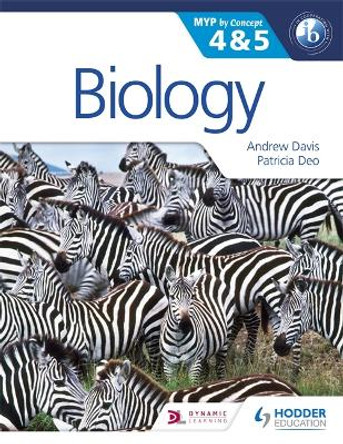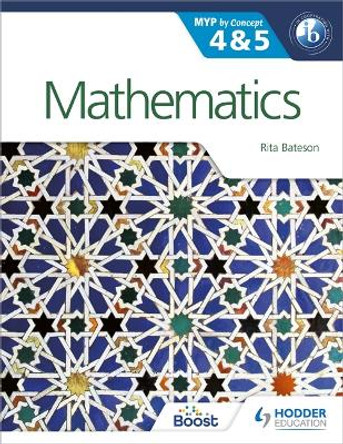Description
A concept-driven and assessment -focused approach to Music teaching and learning.
- Approaches each chapter with statements of inquiry framed by key and related concepts, set in a global context.
- Supports every aspect of assessment using tasks designed by an experienced MYP educator.
- Differentiates and extends learning with research projects and interdisciplinary opportunities.
- Applies global contexts in meaningful ways to offer an MYP Music programme with an internationally-minded perspective.
Also available
eBook 9781398379909
Teacher's Pack 9781510478145
Reviews
A fantastic resource for both new and experienced Music teachers.
Finally, after all these years, there is a textbook for MYP music! And it is not only an outstanding music textbook but one that is specifically designed to work within the MYP framework. It incorporates the IB learner profile and the ATL skills in each and every chapter.
The different sections are based on concepts with ample examples from around the world and across genres and time, making it a truly international book without any cultural bias.
Each chapter starts with a variety of unit questions (factual, conceptual and debatable) and these questions are addressed consistently throughout.
The book provides a solid framework to guide the students through relevant and up to date issues of music nowadays. The author manages to keep the careful balance between giving structure and allowing enough space for personal exploration and all tasks can be completed by students of different levels of expertise.
All the different examples from music technology take out the guesswork for the teacher and catch the students' interest.
With 12 chapters covering a range of topics, this book will work in all settings, as diverse as MYP schools are.
It truly helps the teacher to keep the lessons fascinating and the students engaged - different activities are described in detail and clear guidance is given how to encourage the students to practice their thinking routines.
Each chapter has an informational box with expected prior knowledge - this is a fantastic resource at a glance to check if any pre-teaching is necessary.
Throughout the book, suggestions are given on how to use the process journal successfully, a perfect guide for new teachers and an inspiration experienced teachers to re-think their usual tasks.
There is no need to buy an expensive set of CDs or downloads - throughout the book, there are links to websites, playlists on YouTube videos as well as a Spotify and iTunes.
In each chapter, there are ample suggestions for formative assessments which lead to fully formulated summative assessments, which all clearly linked to the assessment criteria as well as the unit questions.
For the student, a handy checklist is included in each chapter, helping them being responsible for their learning.
All in all, a well thought-through, modern, versatile and inspiring book for years to come.
Is the future school of music a global blend of tradition and modernism? How has technology connected traditional and contemporary cultures? How do musicians innovate with both technical and traditional cultures? These are some of the many deep critical questions which Samuel Wright (Musician, Composer, Apple Distinguished Educator) investigates in his holistic and forward-thinking approach to music education in his new work, MYP by Concept 4 & 5 for Music.
Each chapter focuses on a specific area of inquiry, focussing on key, related and global concepts, connecting the learning of musical elements throughout the process. The twelve areas of inquiry revolve around structuring musical formulas to communicate ideas, identifying cultural contexts to help interpret musical storytelling, creating new musical directions as a way of artistic expression, understanding what is fair and original in relation to musical plagiarism, improvising as a form a creativity, hearing images, examining the impact music has on the gaming experience, combining machines and music-making in innovative manners, producing new musical identities which test musical boundaries, identifying the relationships between emotions and structured ideas to create imaginative compositions, understanding how different schools of thought transform art, and deconstructing the relationships between different musical genres to reframe aesthetic interpretations.
Each area of inquiry is contextualized with the IB learner profile, approaches to learning, factual-conceptual-debatable questions for consideration, assessment criteria covered (knowing and understanding, developing skills, thinking creatively and responding), along with key words, links to other subjects: language and literature, social sciences, natural sciences, mathematics, arts (visual arts, theatre, film, dance) and sports. Prior knowledge and skills needed are appropriately mentioned.
Opportunities for research exploration, experimentation and presenting are abound within a diverse set of musical examples, including, but not limited to hip-hop, classical (orchestral, wind band, choral), pop, film, jazz, electronica, fusion, Indian, Japanese, Indonesian and Latin music. The highlights of each chapter are the activities, extension projects, take-action tasks, and see-think-wonder and think-pair-share protocols for individual and collaborative learning opportunities. Examples include composing for dragons, interpreting Twitter bots, communicating with code, EDM drum mapping, sampling, mixing, and using acoustic instruments and digital programs to make music. There are interactive links to Quizlets and other resources to support student learning. Noteworthy, the end of each chapter includes summative options for students to demonstrate their learning, integrated with self-reflection prompts, tips to effectively document and present their learning in their portfolios and share their take-aways through other mediums.
While there is a considerable presence of diversity in terms of race, gender, and LGBTQ+ composers and performers (many of whom are contemporary and living), this is one area in which Wright could have maximised more to have a stronger balanced representation, especially given the occasional repetition of composers.
The content, both written and visual, is of very high quality and students and teachers alike will undoubtedly find this text very engaging. However, at times, the text and overall layout can be overwhelming, as some chapters are over thirty pages. It could have helped if the content was more succinct and the presentation of material "breathed" a bit more.
In summary, the content and activities in this text provide an inspiring way to learn about music. This text is an indispensable learning resource for students and teachers involved with MYP Music. It can also be an excellent companion for students studying IGCSE Music and it is a valuable preparatory text for students moving onto DP or A-level music programs, let alone for anyone just wanting to learn more about music making in various ways. This text is one which can help propel music education further into the future.
This book is excellent and resourceful. It has the capacity to inspire teachers teaching all kinds of curricula, not only IB. Great job Samuel! -- Ondrej Vesely, Classical guitarist and music teacher * LinkedIn *
Book Information
ISBN 9781510474666
Author Samuel Wright
Format Paperback
Page Count 320
Imprint Hodder Education
Publisher Hodder Education
Weight(grams) 1020g
Dimensions(mm) 274mm * 212mm * 18mm









